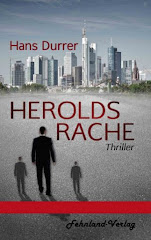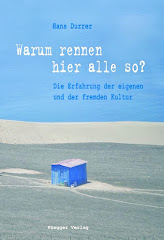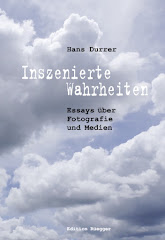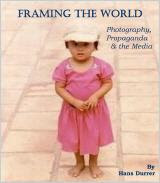"Bold ... original ... exciting", Steven Pinker is quoted on the cover. No wonder that Pinker offers such praise for Denis Dutton draws quite a bit on Pinker (and on Darwin, Aristotle, Kant and quite some others). Moreover, Dutton basically addresses the same fundamental question that Pinker did in his "The Language Instinct", namely, whether we are primarily culturally conditioned or whether we are governed by innate universals.
"Complex language is universal", Pinker argues in "The Language Instinct", "because children actually reinvent it, generation after generation - not because they are taught, not because they are generally smart, not because it is useful to them, but because they just can't help it." It is their nature, it is not nurture. Dutton comes to the same conclusion in regards to art: "Preoccupied as we are with the flashy media and buzzing gizmos of daily experience, we forget how close we remain to the prehistoric women and men who first found beauty in the world. Their blood runs in our veins. Our art instinct is theirs."
I warm to this idea and so I approached Dutton's work with sympathy. The sensations I felt when reading it were similar to the ones I experienced with "The Language Instinct": a mix of fascination and excitement and quite some moments when I felt at a complete loss for this barrage of learned information seemed, well, a bit much, and at times offered rather peculiar conclusions: "A climable tree was a device to escape predators in the Pleistocene, and this life-and-death fact is revealed today in our aesthetic sense for trees (and in children's spontaneous love for climbing them)."
This is how Dutton describes his approach:
"Hauling in animal instincts to compare with human activities can be a suitable way to show the grand continuity of life as Darwin understood it" one reads and that "great works of music, drama, painting, or fiction set us above the very instincts that make them possible. Paradoxically, it is evolution - most significantly, the evolution of imagination and intellect - that enable us to transcend even our animal selves, and it is a purpose of this book to show how natural and sexual selection placed Homo sapiens in this odd situation." That however leads to sometimes rather odd reasonings. Let me quote from the chapter on art and natural selection (yes, I'm quoting out of context yet what I mainly want to point out here is the rather far-fetched link to art): "On the basis of this argument, I therefore side with opponents of the Symons/Lloyd/Gould view of the female orgasm as a nonadaptive by-product of an adaptive male process. A direct link between female orgasm and pregnancy, Lloyd demonstrates, cannot be established (that's hardly a surprise, I'd say), and she uses this fact, in agreement with Gould, to conclude that the female orgasm is not an adaptation. But this analysis implies, in my opinion, a paltry, limited view of human sexual experience. In this regard, it is directly parallel to arguments about whether artistic pleasures might be adaptive. Lloyd makes much of the fact that clitoral pleasure is so often self-induced and experienced in the absence of a partner. But the same might be said of most male orgasms over a lifetime - and this presumably does not call into question the status of the male organ as an adaptation." Well, yes, presumably not.
However, such rather peculiar ponderings are not the rule for this book, as mentioned above, is, first of all, an inspiring, well-written, erudite, smart, insightful, and opinionated read. " ... the whole idea that art worlds are monadically sealed off from another is daft. Do we need to be reminded that Chopin is loved in Korea, that Spaniards collect Japanese prints, or that Cervantes is read in Chicago and Shakespeare enjoyed in China? Not to mention pop music and Hollywood movies, which have swept the world."
This is, essentially, a book full of clever arguments, let me give you two examples that I've found particularly fascinating. Here's the first one:
A study on picture preferences around the world showed a remarkable uniformity about what counts as a beautiful landscape: a landscape with trees and open areas, water, human figures and animals. Surely, this must be due to exposure to the same kind of images, right? Here's how Dutton argues: "... the window of my office at the New Zealand university where I teach is high, and its ledge offers a convenient perch and nesting place for pigeons. Whatever their charms, these creatures, alas, are extremely messy; they finally made the ledge so unhygienic that the window had to be shut at all times. How to keep them away? My solution is a rubber snake on the ledge. I have seen the birds land on the ledge, see the snake, and immediately depart.They don't come back. The odd fact is that, although European pigeons have been in New Zealand for a couple of hundered pigeon generations, there are no snakes in New Zealand and never have been. The phobic reactions of the birds is therefore learned neither from exposure to snakes nor from images of snakes. In snake-free New Zealand it is a perfect instance of a natural atavism: an innate fear-response that is passed, unnecessarily in these parts, from generation to generation of pigeons."
Here's the second one: When, in 2004, five hundred "of the most powerful people in the art world" (Dutton surely lives in a world of superlatives) - dealers, critics, artists, and curators - were asked what they thought the most influential work of art of the twentieth century was, they voted for Marcel Duchamp's 'Fountain', the men's urinal put forward for exhibition in 1917. But is 'Fountain' a work of art?, asks Dutton and analyses it against a list of cluster criteria: direct pleasure, skill and virtuosity, style, novelty and creativity, criticism, representation, special focus, expressive individuality, emotional saturation, intellectual challenge, art traditions and institutions, and imaginative experience. "On a numerical calculation of items on the cluster criteria list, not to mention the overwhelming agreement of generations of art theorists, and art historians, the answer is a resounding 'Yes, 'Fountain' is a work of art.' Duchamp's readymades nevertheless incite fierce debate because they so deeply and effectively challenge our evolutionary response-system for art: where's the emotion, the individuality, the skill, the beauty? Duchamp set himself not only against culture but against the adaptive structure of art. Yet there it is on a plinth, an object of no special interest made into an object of the most special attention. Can this be art? Of course not, and yet it must be, as the experts continue to insist. As philosophical provocations about art, the readymades are intellectual masterpieces. For its part, 'Fountain' may not be pretty, but as an art-theoretical gesture, it is a work of incandescent genius." Good points, I'd say. On the other hand: there is no such thing as hard evidence in the humanities, and so there is no need to take 'expert'-opinions for more than what they are - opinions, that is.
PS: Dutton also meditated on kitsch and states that "literature and philosophy too can offer kitsch by way of undemanding analysis of life's problems through trite insights into the secret of the universe. In this respect, Hermann Hesse's pretentious mysticism and Kahlil Gibran's little messages dressed up in pseudo-biblical cadences count as kitsch." Well, this reads as if Mr. Dutton's determination to be "bold" and "original" (Pinker) has, in this instance, got the upper hand - for to label Hesse's insights "pretentious mysticism" or Kahlil Gibran's poems "little messages dressed up in pseudo-biblical cadences" is a bit cheap.
Denis Dutton
The Art Instinct
Oxford University Press 2009
The Art Instinct
Oxford University Press 2009




















No comments:
Post a Comment